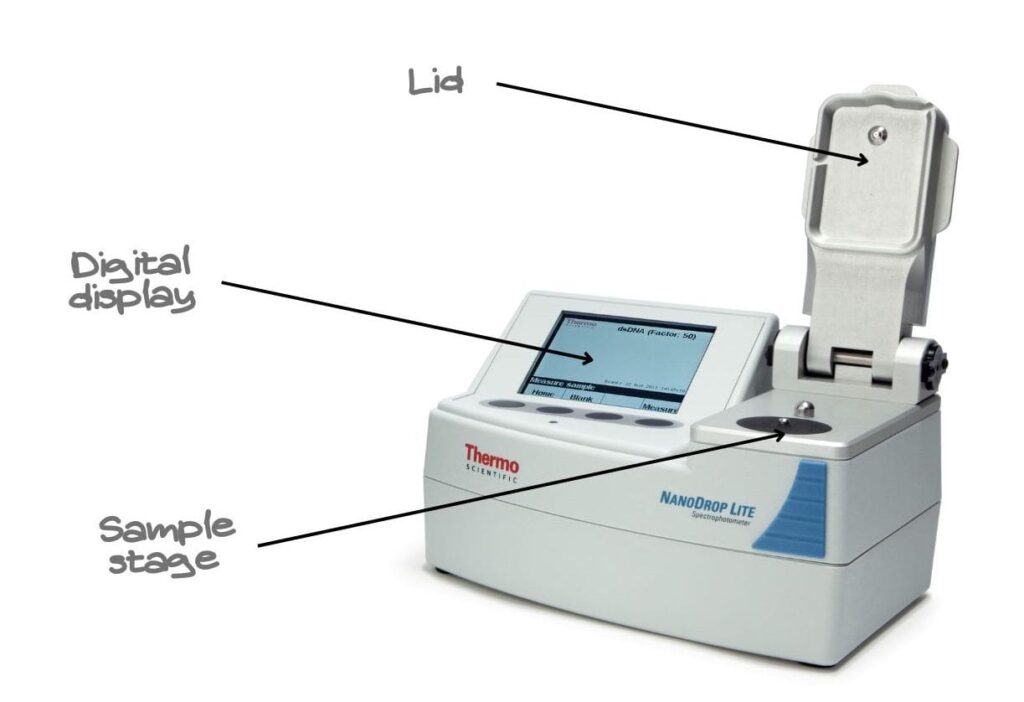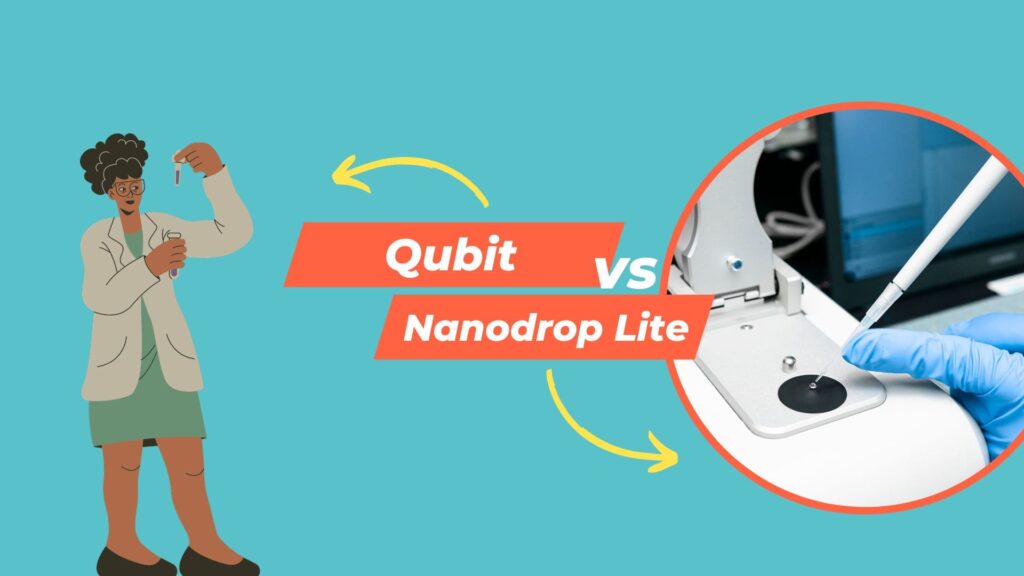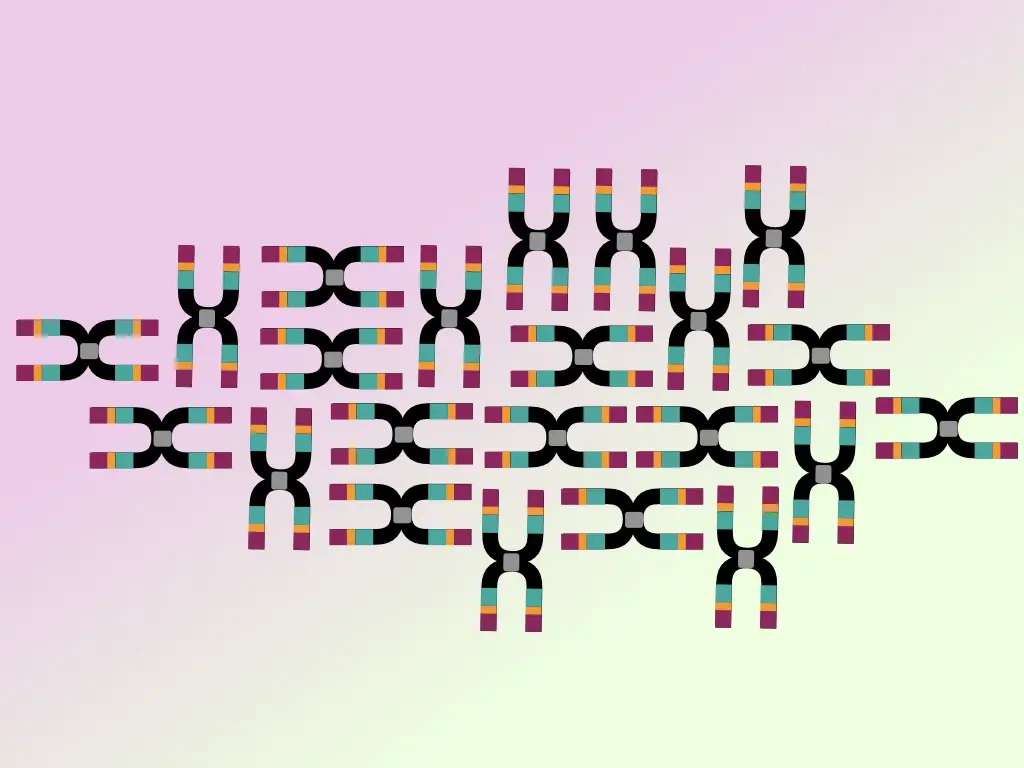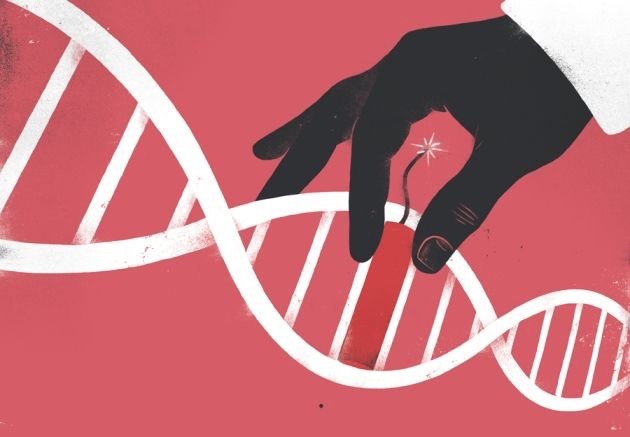“Qubit and Nanodrop both are nucleic acid quantification instruments. Explore the working principle, advantages and limitations of Qubit and Nanodrop Lite in this article.”
The instruments we are using in the molecular genetic laboratory are super costly. In addition, each Instrument comes with advantages and limitations. Thus, it’s a crucial process to choose an instrument as per our requirements, budget and suitability.
It’s a difficult thing for a seasoned scientist to choose the right device for their needs. At Genetic Education Inc. my team including me has experience working in various labs and instruments.
Starting from centrifuge to PCR and microarray to NGS; we worked on almost every possible instrument present in a genetic lab. I came to an idea about reviewing various instruments like the tech-people do on YouTube and their blogs. Because we know about various instruments– their working, principle and applications.
Let’s start this series with DNA quantification instruments.
Qubit and Nanodrop Lite are two common instruments we commonly use in a genetic lab for nucleic acid quantification, not in a pair but separately. Both have different chemistry, working principles, advantages and limitations.
In this article, I will review the Qubit and Nanodrop Lite nucleic acid quantification machines and give you a comparative overview. I will guide you in choosing the right instrument for you.
Stay tuned.
Key Topics:
Qubit:
Qubit is a type of fluorometer used in a genetic lab for the quantification of DNA or RNA. Unlike the spectrophotometer, it doesn’t rely on UV-light absorbance. ‘Qubit’ a registered trademark of Invitrogen.
The instrumental setup is very easy and simple. The instrument contains a digital display, a USB port and a sample chamber. Additional fluorescent preparation is required for sample preparation. It’s a very compact instrument.

Principle:
The chemistry behind Qubit’s working is fluorescence. A nucleic acid-binding fluorescent dye is used for sample preparation which binds to the double-stranded DNA only. Upon binding it releases fluorescence which is detected by the Qubit detector.
Thus, the amount of fluorescence detected is directly proportional to the amount of dsDNA present in the sample. By doing this, the machine determines the quantity of nucleic acid in a few minutes.
How to quantify the nucleic acid using Qubit?
- To prepare a 200µL reaction add 10 µL of DNA with the same amount of dye.
- Add 180µL of Qubit reaction buffer, mix the sample and incubate for a few minutes at room temperature.
- Now place the tube in the sample chamber. And allow quantification. Keep in a note to run a standard every time before processing the sample. Standard is nothing but a sample without DNA.
Advantages:
- Qubit is well-known for its accurate nucleic acid quantification. Fluorescence chemistry provides accurate quantitative data for both DNA and RNA.
- It has a wide dynamic range. It can effectively quantify both high and low-volume nucleic acid samples. Hence it’s a first choice for high-throughput experiments like DNA sequencing and microarray.
- The machine is sensitive enough to quantify even nano- to picograms of DNA/RNA with precision. It can quantify as low as 10pg to as high as 200 ng of DNA/RNA.
- The instrument is very small, easy to use and cheap.
- It requires a very small amount of samples (1 to 10µL).
- It processes samples within a few minutes.
Disadvantages:
- It can’t estimate the purity of nucleic acid.
- Qubit requires additional needs such as fluorescence dye, buffer and sample preparation.
- The fluorescent dye comes with a low shelf life.
- Qubit is not as fast as the Nanodrop Lite for sample processing.
- The machine needs recurrent requirements like fluorescent dyes, Qubit buffer and kit which makes it costlier in the longer run.
Nanodrop Lite:
Nanodrop Lite is a type of spectrophotometer used for the quantification of not only the nucleic acids– DNA or RNA but also for proteins. We, in a lab, know it as only ‘Nanodrop.’
The machine works on the principle of UV-spectrophotometry and measures the Light absorbance by the substance present in the sample. Much like the Qubit, Nanodrop is also compact, simple and easy to use.
It has a digital display, a sample stage and a lid. That’s it! When we put a drop of sample on the sample stage, the machine automatically measures the amount of nucleic acid present in the sample.
Interestingly, it has one additional advantage over the Qubit. It can determine the purity of the nucleic acid as well.

Principle:
As aforesaid, it works on the principle of UV-visible spectroscopy. Here, when the light beam passes through the sample, the amount of light absorbed by the nucleic acid present in the sample is directly proportional to the amount of nucleic acid present in the sample.
Meaning, that the more the absorbance, the higher the concentration.
How to quantify the nucleic acid using Nanodrop?
- The process is very simple. Take 0.5 to 1µL of sample and load it on the sample chamber.
- Close the lid and run the quantification. within a minute we will get the results. It will give us quantitative and qualitative data.
- Keep in mind to run a blank using the TE buffer or D/W before running the sample.
Advantages:
- The major advantage of the Nanodrop over the Qubit is that it can determine the purity of the DNA as well.
- It doesn’t require any additional utilities like a fluorescent dye, buffer or sample preparation.
- It’s faster than the Qubit and gives us results within a few seconds.
- No extensive dilution, sample preparation or incubation is required.
- It requires a very small sample volume (0.5 to 1µL).
- It’s used for protein quantification too.
- It is more safe to use as no fluorescent dye is required here.
- It’s compact, lightweight and easy to operate.
Disadvantages:
- The machine is a bit costlier than the Qubit.
- It has less sensitivity than the Qubit as it can quantify dsDNA, ssDNA and other contaminants present in the sample as well.
- It can’t quantify as low volume as the Qubit.
Comparison between Qubit vs. Nanodrop Lite:
| Qubit | Nanodrop Lite | |
|---|---|---|
| Chemistry | Fluorescent emission | Light absorbance |
| Principle | Fluorometric analysis | Spectrophotometric analysis. |
| Sample Input | 1 to 10µL | 0.5 to 1µL |
| Quantification range | 10pg to 200 ng | 10ng to 10µg |
| Processing time | 1 to 5 minutes | <1 minute |
| Accuracy | Very high ~99% | Moderate ~90% |
| Additional requirements | Needed | Not needed |
| Qualitative analysis | Not possible | Possible |
| Company | Invitrogen | ThermoFisher Scientific |
Comparative analysis:
You may get an idea about which instrument to select for your lab, after reading this article. Let me tell you that the selection highly depends on your requirements and needs.
If your lab is doing small-scale research, cost is a crucial factor for you, I guess you can choose Qubit. But keep in mind that it can’t determine the purity of the DNA. In that case, you can perform gel electrophoresis if you have expertise in this area.
Contrary, if your lab is dealing with sophisticated research, diagnosis and you have to deal with DNA sequencing or microarray. You surely have to go with the Nanodrop Lite. It may also give you an additional advantage of speed and low sample volume processing.
If you are planning to open a genetic lab, any of these two instruments must be there in your list, first. However, if your plans are long-term, trust me you can go with the Nanodrop Lite.
Nanodrop Lite is a costly machine but is a cost-effective option in the long run. Also, the shelf life of the machine is very good. You can use it for years. In the last scenario, if your lab has decent funding, I suggest you purchase both instruments.
One for accurate quantification and another for accurate purity estimation.
Wrapping up:
I hope this article will make sense for you. Both the machines are amazing, I used both the instruments and even the Qiagen QIAXpert. Among all three my personal favourite is the Nanodrop.
If you have a very good working hand and a decent expertise in nucleic acid extraction, I think contamination would not be a problem for you and in that case, you can use Nanodrop Lite.
So that’s it, Nanodrop Lite won the battle in my opinion.



